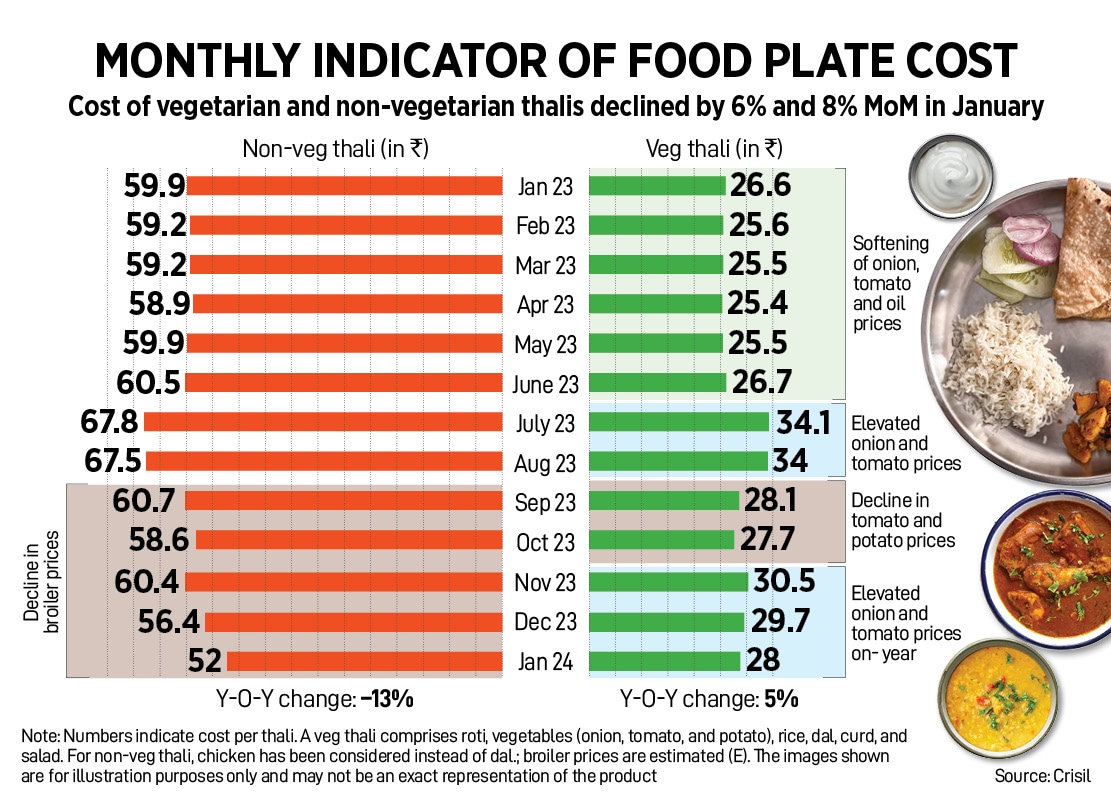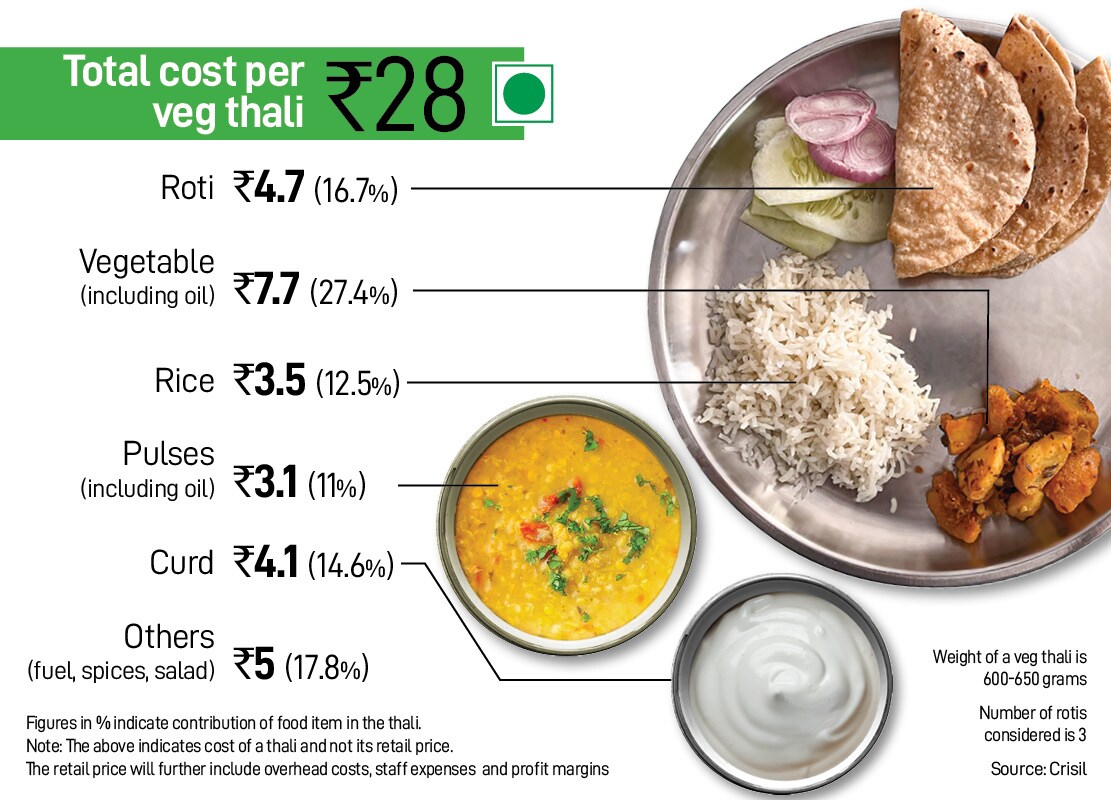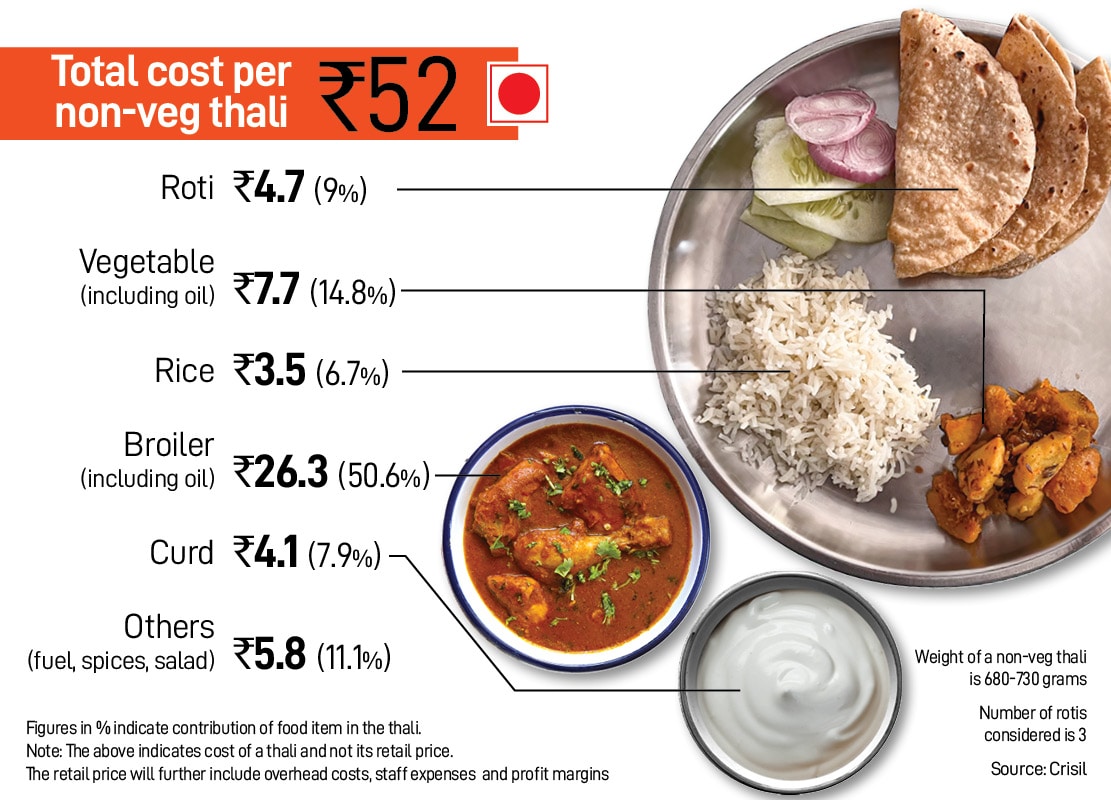How India Eats: Rice, pulses, onion amp up thali cost again in January
Fall in broiler chicken prices continue to keep non-vegetarian thali costs lower but rice, pulses and onion increase the overall cost of a vegetarian thali



Even as overall inflation may have eased moderately in January, prices of a few key food items are still keeping the cost of the vegetarian thali high.
The average price of a vegetarian thali prepared at home increased by 5 percent in January to Rs 28 compared to Rs 26.6 last year, based on an analysis by Crisil. The same thali, however, cost Rs 29.7 in December, indicating a decline of 6 percent on a monthly basis. Prices of tomato and onion continued to stay high, hitting the cost of a vegetarian thali. In a year, the price of onion jumped 35 percent while that of tomatoes rose by 20 percent.
In addition to that, the price of rice also increased 14 percent and pulses 21 percent year-on-year in January. Rice contributes 12 percent to the cost of a vegetarian thali while pulses 9 percent.
The average cost of preparing a thali at home is calculated based on input prices prevailing in north, south, east, and west India. The monthly change reflects the impact on the common man’s expenditure. The data also reveals the ingredients (cereals, pulses, broilers, vegetables, spices, edible oil, cooking gas) driving changes in the cost of a thali.

“The cost of the non-veg thali declined faster due to a decline of 8-10 percent month-on-month in prices of broilers, which account for 50 percent of the cost," says Crisil.
Overall, the easing on cost of both the thalis on an annual basis was due to a decrease of 26 percent and 16 percent month-on-month in the prices of onion and tomato, respectively, with higher domestic supply of onion amid export curbs and fresh tomato arrivals from the northern and eastern states.

Food inflation in India averaged above 6 percent year-on-year between January 2022 and December 2023. Drivers of the elevated prices have alternated between non-perishable food, which were mostly cereals and spices in 2022 and pulses in second half of 2023, while those were perishable items like vegetables in the second half of 2023, says Rahul Bajoria, MD & head of EM Asia (ex-China) Economics, Barclays.
Throughout this period, multiple factors, including high input costs, severe weather, and increased demand have combined to keep food inflation elevated. Government intervention, in the form of price and/or quantity controls, have tempered the momentum, but intermittent flareups in food prices persist.
(Forbes India"s monthly series "How India Eats" takes a look at how the average price of a food plate in India changes every month, indicating the impact on the common man"s expenditure, by analysing the Indian thali.)
First Published: Feb 07, 2024, 11:20
Subscribe Now